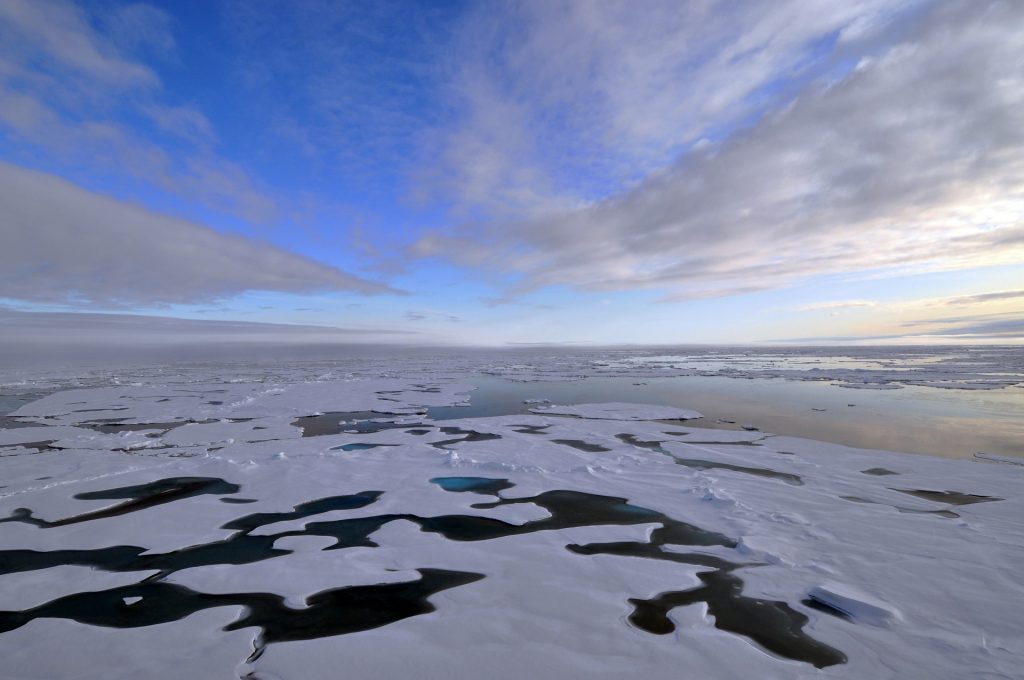June 02, 2025

(Bloomberg) — The Trump administration is moving to repeal Biden-era curbs blocking oil drilling across most of the mammoth petroleum reserve in Alaska that’s home to an estimated 8.7 billion barrels of recoverable oil.
Interior Secretary Doug Burgum announced the planned policy shift late Sunday at a town hall in Utqiagvik, a village on the Chukchi Sea coast, as he and fellow members of President Donald Trump’s cabinet visit Alaska to promote energy development in the region.
The measure would open up new opportunities for oil and gas development in the 23-million-acre National Petroleum Reserve-Alaska, an Indiana-sized parcel in the northwest of the state that was set aside as a source of energy for the Navy a century ago.
The action responds to a directive Trump issued after his inauguration in January, when he signed an executive order compelling a host of policy changes meant to expand oil, natural gas and mineral development in Alaska.
The reserve holds an estimated 8.7 billion barrels of recoverable oil, according to a 2017 assessment by the US Geological Survey. And its production is set to skyrocket, with the development of recent discoveries. Alaska has forecast that crude production from the reserve will climb to 139,600 bpd in fiscal 2033, up from 15,800 bpd in fiscal 2023.
Trump’s measure would repeal a 2024 rule imposed under former President Joe Biden, which designated 13 million acres of the reserve as “special areas,” limiting future oil and gas leasing, while maintaining leasing prohibitions on 10.6 million acres of the NPR-A.
The rule has complicated future oil drilling and production in the reserve where companies including ConocoPhillips, Santos Ltd., Repsol SA and Armstrong Oil & Gas Inc. have been active. ConocoPhillips is developing its 600-million-barrel Willow project in the refuge, which is expected to produce first oil in 2029.
“API applauds the administration for taking action to repeal the misguided NPR-A rule and fully leverage Alaska’s National Petroleum Reserve as a driver of revenue, economic growth and energy security,” said American Petroleum Institute (API) Senior Vice President of Policy, Economics and Regulatory Affairs Dustin Meyer in reaction to the news. “Our industry is committed to the safe, responsible development of Alaska’s vast energy resources, and we look forward to working with Secretary Burgum to advance American energy dominance.”
Burgum’s announcement was greeted by applause inside a heritage center in Utqiagvik, where local residents had gathered to speak with officials from the Trump administration, as well as Senator Dan Sullivan and Alaska Governor Mike Dunleavy, about resource development. Burgum, who leads the National Energy Dominance Council, was joined by the panel’s vice chair, Energy Secretary Chris Wright and EPA Administrator Lee Zeldin.
Wright said he anticipated increased oil development in Alaska — possibly quadrupling oil output on its prolific North Slope — and decried years of policies he said were “smothering” the region’s potential.
Rex Rock Sr., the head of the Arctic Slope Regional Corporation, one of 13 Alaska Native Regional Corporations created under federal law, said that the 2024 rule restricting energy development in the far north didn’t have the backing of the region.
Environmentalists had argued Biden’s rule was essential to protect a large stretch of unspoiled land in the Arctic, a vast region of tundra and wetlands that teems with wildlife. And, they insisted, in a warming world there’s insufficient justification for burning the large cache of oil the reserve contains.
The new proposal will give the public 60 days to comment, setting the stage for a potentially rapid reversal and new leasing in the reserve. Conservationists who cheered the original protections could seek to challenge the pivot in federal court.

